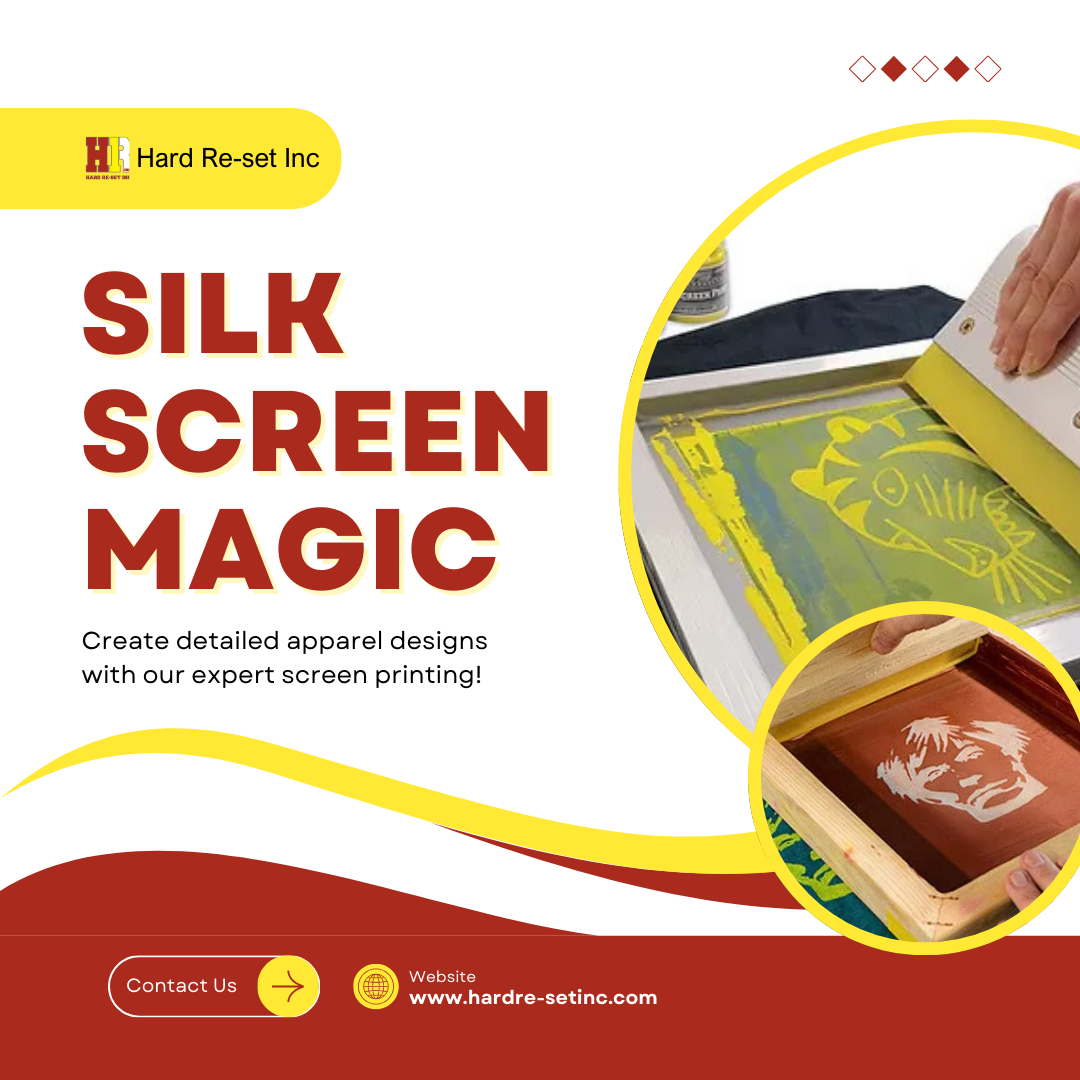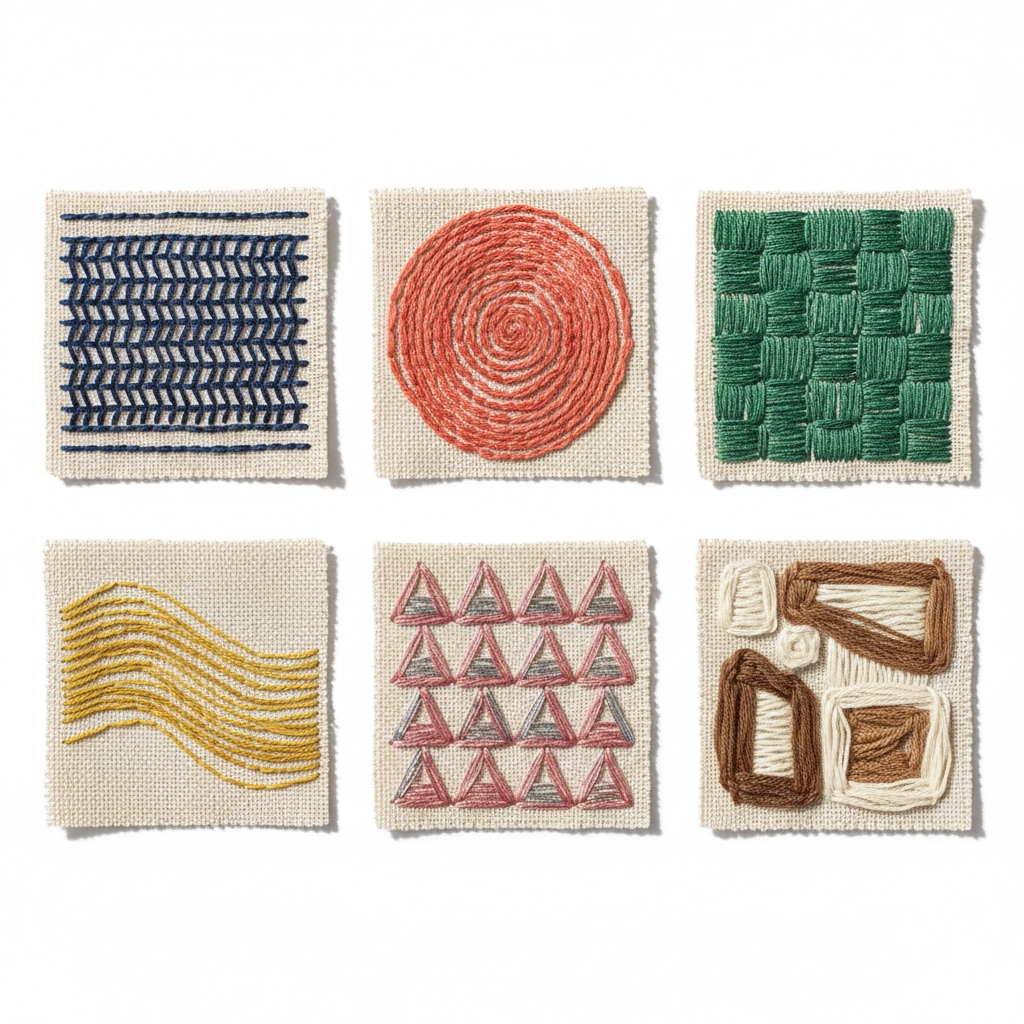The Dos and Don'ts of Designing Club Logos for T-Shirts, Patches, and Jackets
- Janet Emma
- 3 days ago
- 5 min read
Designing a club logo that works across t-shirts, patches, and jackets requires balancing creativity with practicality. At Hard Re-Set Inc., we've seen thousands of designs come through our shop, and we know what separates great club logos from mediocre ones. Here's your complete guide to creating logos that look sharp on everything from embroidered patches to screen-printed hoodies.
Design Fundamentals That Matter
Scalability Is Everything
Your logo needs to look crisp at 2 inches on a patch and bold at 12 inches on a jacket back. Design with the smallest application in mind first. If your logo works as a 2-inch embroidered patch, it'll work everywhere else.
Color Limitations Are Real
Embroidery typically works best with 6 colors or fewer. Screen printing can handle more, but costs increase with each color. DTG printing offers the most color flexibility, but even then, simpler designs often look cleaner.
Line Weight Matters
Thin lines disappear in embroidery and can look muddy in screen printing. Keep line weights at least 0.75 points for embroidery and 0.5 points for screen printing.

The Essential Dos
DO Keep It Simple
Complex designs with intricate details fail when scaled down. Your club logo should communicate instantly. Think about logos you recognize from across a parking lot – they're all simple, bold designs.
DO Use Team Colors Strategically
Stick to 2-3 main colors that represent your club's identity. Red conveys energy and passion, blue suggests trust and loyalty, green represents growth or nature. Choose colors that work together and avoid trendy combinations that'll look dated in five years.
DO Include Your Club Name
Sounds obvious, but you'd be surprised how many clubs forget this. The name should be readable from a reasonable distance. Use clean, bold fonts like Arial, Helvetica, or custom block lettering.
DO Consider Your Club's Story
Great logos reference the club's history, location, or mission. A cycling club might incorporate tire treads, a fishing club could use a stylized hook, or a local club might reference regional landmarks.
DO Design for Your Audience
Professional business clubs need different aesthetics than motorcycle clubs or sports teams. Know your audience and design accordingly.
DO Test at Different Sizes
Print your logo at various sizes and distances. Can you read it from 10 feet away? Does it look good at 1 inch? If not, simplify.

The Critical Don'ts
DON'T Use Too Many Colors
Every additional color increases costs and complexity. Embroidery with 8+ colors looks muddy and expensive. Screen printing with multiple colors requires precise registration that smaller shops can't always deliver.
DON'T Use Gradients
Gradients rarely translate well to embroidery and can look pixelated in screen printing. DTG handles gradients better, but solid colors always look cleaner and more professional.
DON'T Use Overly Decorative Fonts
Script fonts, decorative typefaces, and fonts with thin serifs cause problems in production. Stick to bold, sans-serif fonts or simple block letters. Your logo needs to be readable, not artistic.
DON'T Ignore Negative Space
Dense designs without breathing room look cluttered, especially when embroidered. Use negative space strategically to make your design pop.
DON'T Copy Other Clubs
Original designs stand out. Copying or closely imitating other clubs' logos creates legal problems and makes your club forgettable.
DON'T Forget About Production Costs
Complex designs cost more to produce. Multiple colors, intricate details, and large sizes all increase costs. Design within your budget constraints.

Application-Specific Considerations
T-Shirts and Hoodies
Screen printing works great for t-shirts with bold, simple designs. DTG printing handles complex designs and photos better but costs more for large quantities. Consider placement carefully – center chest is standard, but left chest pocket areas work well for smaller logos.
Patches
Embroidered patches have unique requirements. Details smaller than 1/8 inch disappear. Text should be at least 1/4 inch tall. Stick to block letters and avoid script fonts. Consider patch shapes – circles and rectangles are cheaper than custom die-cut shapes.
Jackets
Large back designs make bold statements but cost more. Chest logos should be smaller and simpler. Consider the jacket material – leather requires special techniques, while standard fabric jackets work with most printing methods.
Hats
Front panel placement is standard, but curved bills create distortion. Keep designs proportional and avoid tall, narrow logos that look awkward on curved surfaces.
Legal Considerations
Trademark Research
Search existing trademarks before finalizing your design. The USPTO database is free and searchable. Similar designs in your industry could create legal issues.
Copyright Awareness
Don't use copyrighted images, fonts, or designs without permission. Stock imagery might seem free, but commercial use often requires licensing.
Documentation
Keep records of your design process, inspiration sources, and creation dates. This documentation helps if legal questions arise later.

Color Psychology and Technical Specs
Understanding Color Impact
Colors trigger emotional responses. Black suggests power and sophistication. Red creates urgency and energy. Blue builds trust and stability. Green implies growth and harmony. Choose colors that match your club's personality and values.
Technical Color Specifications
Provide your printer with Pantone color codes for consistency across different printing methods. RGB colors work for digital mockups, but CMYK or Pantone ensures accurate reproduction.
Color Contrast Requirements
Ensure sufficient contrast between text and background colors. Light colors on dark backgrounds generally work better for readability, especially in embroidery.
Working with Professional Designers and Printers
Communication Is Key
Clearly explain your club's mission, values, and target audience to designers. Provide examples of logos you like and dislike. The more information you share, the better the final result.
File Format Requirements
Vector files (AI, EPS, PDF) scale without quality loss and work best for all printing methods. Avoid JPEGs and PNGs for final artwork – these pixel-based formats look terrible when enlarged.
Proof Review Process
Always review proofs carefully before production. Check spelling, colors, and proportions. Changes after production starts cost significantly more than corrections during the design phase.
Timeline Planning
Good design takes time. Rush jobs often produce mediocre results. Allow 2-3 weeks for design development and another 1-2 weeks for production, depending on quantity and complexity.
Budget Planning and Cost Control
Design Investment
Quality design pays for itself through professional appearance and reduced revision costs. Budget $200-500 for professional logo design – it's worth the investment for something representing your entire club.
Production Cost Factors
Quantity affects per-unit pricing significantly. Colors, print locations, and garment types all impact costs. Discuss budget constraints upfront with your printer to find solutions that work within your parameters.
Long-term Value
A well-designed logo lasts years without updates. Factor in long-term use when budgeting – a slightly higher upfront investment saves money over time by avoiding redesigns.
Creating effective club logos requires balancing creativity with technical limitations. Focus on simplicity, scalability, and clear communication of your club's identity. Work with experienced professionals who understand production requirements and can guide you through potential pitfalls.
Remember that your logo represents every member of your club. Invest the time and resources necessary to create something you'll be proud to wear and display for years to come.


Comments